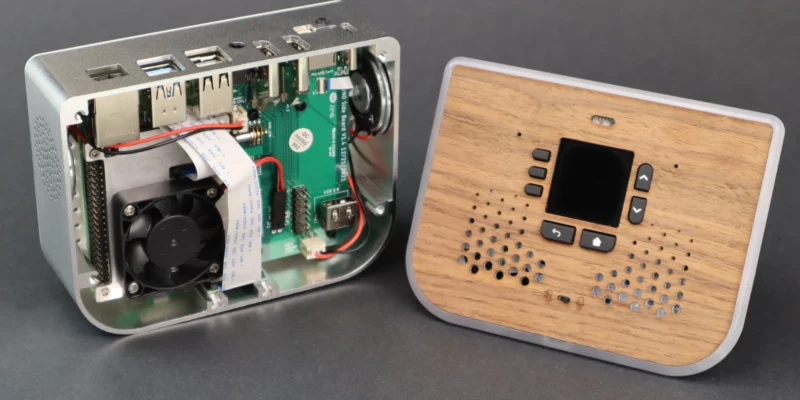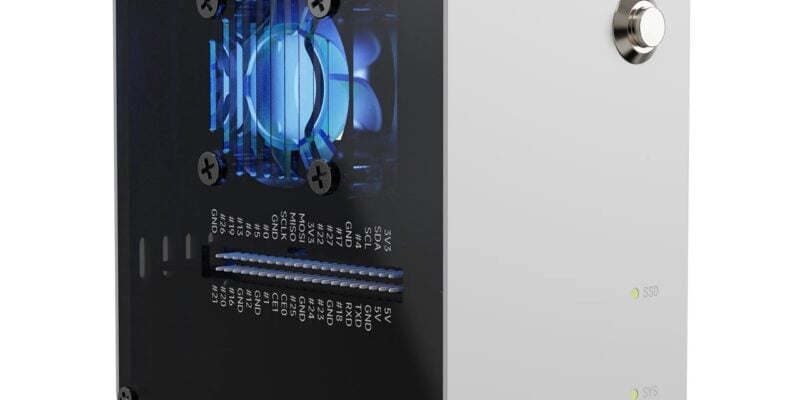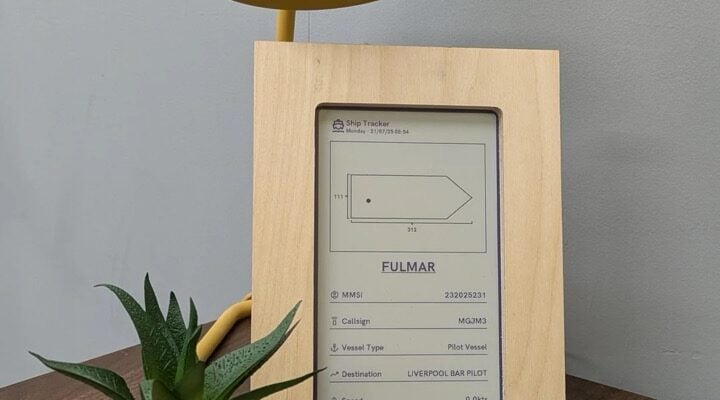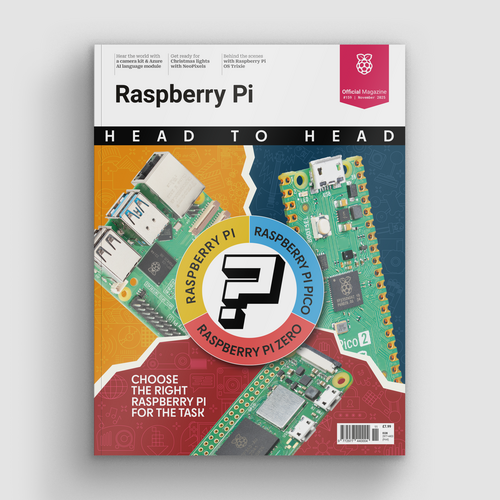The Computers That Made Britain book is out now
By Lucy Hattersley. Posted

We’re loving The Computers That Made Britain, a new book written by Tim Danton and available on our Raspberry Pi Press store.
The Computers That Made Britain (300 pages, hardback) tells the story of 19 of those computers – and what happened behind the scenes. With dozens of new interviews, discover the tales of missed deadlines, technical faults, business interference, and the unheralded geniuses who brought to the UK everything from the Dragon 32 and ZX81, to the Amstrad CPC 464 and Commodore Amiga.
Advertisement
Head to head: Raspberry Pi + Raspberry Pi Zero + Raspberry Pi Pico.
We heartily recommend that you pick up a copy of this fantastic new book, The Computers That Made Britain. If you have any interest at all in the history of computing, the behind-the-scenes stories here are illuminating.
In the spirit of plugging this book for Tim, and our friends over at the exceptionally good Wireframe magazine, here are some of our highlights from the book along with our favourite adverts for these classic machines.
Sinclair ZX Spectrum
Few computers ignite such affection as the ZX Spectrum (perhaps only matched by our beloved Raspberry Pi). Many British programmers cut their teeth on Sinclair computers.
Sinclair took out full-page adverts in the daily newspapers with the headline, ‘Popular in schools. And the only computer that runs primary schools software at home.’ The message was a spin on a now familiar formula: if you want the best for your children, you need to buy them a computer.
We love these adverts for The Sinclair spectrum. They show clearly all the different demands. Kids want games, adults want learning software, and Sinclair itself wanted to show off its considerable high-tech manufacturing prowess.
BBC Micro and Acorn Electron
While Sinclair and Commodore were heavily used for games, Acorn’s BBC Micro was at the heart of the BBC Computer Literacy Project. Every UK schoolchild for a generation learned to code on a BBC Micro.
It’s as hard to overestimate the effect of the BBC Micro as it is to quantify it. For a start, unlike any of the other computers in this book, it wasn’t simply a clever box: thanks to the backing of the BBC, it was supported by TV programmes, by excellent guides, by training for teachers, and by local colleges. It also had ubiquity: in the mid-1980s, it would have been hard to find a British school that didn’t contain a Micro.
The Acorn Electron is a more downbeat tale of the computer that should have been a much bigger success than it was. We’re still smarting about never owning one, to be honest.
Amstrad CPC 464
When Alan Sugar entered the computer market, everybody doubted his ability to make an effective high-tech device. But you know what, we knew lots of people with Amstrad CPC 464’s and they were all happy.
The Amstrad CPC 464 story is perhaps the most interesting in the book. A telling account of how Alan Sugar managed to form a team to produce a cracking all-in-one computer, packed with value, and with decent performance.
So what was the CPC 464’s impact upon Britain? It’s true that it doesn’t produce the same level of nostalgia as either the BBC Micro or the ZX Spectrum, but when we asked people via social media what impact the CPC 464 had on their lives we virtually drowned in responses.
Like many computers, Amstrad’s market was for teenagers wanting to play games who had to convince adults that it would be an invaluable learning tool, as this Amstrad CPC 6128 advert so deftly demonstrates:
Commodore 64
Commodore may not have been a British computer company, but there’s no denying the impact it made on British computing, and around the world.
‘You could go to the US and someone will say, what was the BBC Micro? They’d never heard of it. Whereas you could go almost anywhere in the world with a Commodore 64 and they know it.’ Kit Spencer
As a special bonus, check out this Australian advert for the Commodore 64. It’s too good to leave out.
Be sure to pick up your copy of The Computers That Made Britain today. Click here to download a free copy or purchase a print edition from The Raspberry Pi Press Store.
Let us know in the comments which classic home computer was best.

Lucy is Editor of Raspberry Pi Official Magazine.
Subscribe to Raspberry Pi Official Magazine
Save up to 37% off the cover price and get a FREE Raspberry Pi Pico 2 W with a subscription to Raspberry Pi Official Magazine.
More articles

All right all right!! Artificial Intelligence, Hollywood style
When we get AI right, odds on it’ll be thanks to small firms, motivated individuals, and Raspberry Pi
Read more →

Pironman 5 Mini review
Compact and bijou, this Raspberry Pi 5 case looks cool
Read more →

E-ink shipping monitor
The display comprises a Raspberry Pi Zero 2 W, a Pimoroni Inky Impression 7.3-inch display, and a Wegmatt dAISy Mini AIS receiver. AIS stands for ‘Automatic Identification System’, and it’s this device that picks up the signals coming from the ships themselves, which goes to the display via the Raspberry Pi Zero 2 W. There’s probably a […]
Read more →
Sign up to the newsletter
Get every issue delivered directly to your inbox and keep up to date with the latest news, offers, events, and more.
